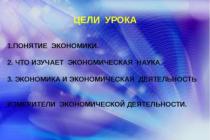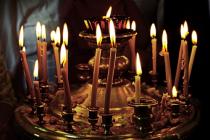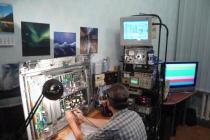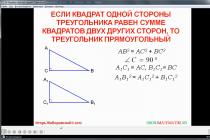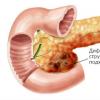At the moment, there is a serious struggle between manufacturers of luminescent and LED lamps, as both technologies are chosen to replace the outgoing star of incandescent lamps.
Before the advent of bright LEDs, luminescent products did not know competition and were, as they say, the highest grade.
Of strengths fluorescent lamps the following can be distinguished:
1. Duration of operation - from 2000 to 20000 hours of work.
2. Low power consumption, measured in lumens produced by the lamp.
3. The best curvature of the light wave in defiance of incandescent lamps, which improves the illumination of visible objects.
Of the shortcomings:
2. Optional for individuals(mandatory for the industry), worth the money competent recycling of used lamps. Few people use this service, and everyone tends to basically throw the lamps into ordinary garbage, thereby creating a "green" danger.
3. Frequent need for inspection, control and troubleshooting of lighting fixtures due to heating, replacement of lamps (despite the duration of operation).
As can be seen from all the pros and cons, the fundamental and only drawback of fluorescent lamps is mercury.
After the advent of LEDs capable of producing the same or more lumens with less or equal power consumption, LED lamps and fixtures began to compete with fluorescent lamps.
Of the primary advantages of LED lamps It should be noted:
.jpg)
1. Equal or greater lumens production as opposed to luminescent products.
2. The best curvature of the light wave, unlike fluorescent lamps, so even with less light output in lumens, illuminated objects in the light of LEDs will be seen better.
3. Minimum power consumption.
4. "Secular" period of operation of LEDs (from 30,000 to 50,000 hours).
5. Stopping the need for periodic repairs, inspection and control of lighting fixtures due to heating, replacement of lamps.
6. Electrical safety as LEDs use voltage up to 50V.
Of the negative points of LED products:
1. A very tangible price of lighting fixtures and LED technology. That is, LED technology is good in every sense of the word, but has a long payback period and initial high cost.
.jpg)
Considering the above data, you can easily decide on the type and type of lamp, based on the needs for which you need it.
To calculate the required proportion of fixtures in a room, you can use special methods and regulatory and technical documentation that regulates the desired / mandatory number of lumens per square meter (i.e., lux) of the agreed area.
.jpg)
The importance of lighting in residential areas cannot be overestimated.
Luminescent lighting used to be used only in industrial enterprises, offices, shops. This is due to the size, cold blue glow, flickering and unpleasant buzz.
But recently, devices of compact sizes, various colors, original design, as they have found their rightful place in the loft style (see).
Design and principle of operation
 Main feature and advantage fluorescent lamps- the use of fluorescent. They are inserted using special lamp holders (cartridges). Connection of cartridges with wires - bronze clamps.
Main feature and advantage fluorescent lamps- the use of fluorescent. They are inserted using special lamp holders (cartridges). Connection of cartridges with wires - bronze clamps.
Fluorescent lamps are glass tubes with soldered ends at both ends. The tube is filled with argon gas. The walls of the tube are coated with a layer of phosphor. In addition to argon, there is mercury inside the tube.
When power is applied between the electrodes at opposite ends of the tube, an arc discharge occurs. An electrical discharge causes a glow in ultraviolet light. This radiation is absorbed by the phosphor and converted into a visible glow perceived by the human eye.
The color of the glow depends on the composition of the phosphor.
The main elements are the body, reflector and diffuser (or grating). The grille is mirrored, matte or white. Lamps are produced with open light sources and with shades.
But one lamp and housing is not enough. For operation, special ballast equipment is required. Previously, the lamps were equipped with electromagnetic ballasts (choke), which during operation made an unpleasant sound and had large dimensions.
Modern devices do not have such a disadvantage. They are equipped with electronic ballasts (PRA).
Digitally controlled ballast implements the most original lighting projects, allows them to be used in an energy-saving “smart home” system.
Variety of species
 Fluorescent lamps are used as ceiling and wall lighting. divided into overhead, built-in and suspended. Overlays are attached to the ceiling. can be used for suspended ceilings. Suspended are used for local lighting.
Fluorescent lamps are used as ceiling and wall lighting. divided into overhead, built-in and suspended. Overlays are attached to the ceiling. can be used for suspended ceilings. Suspended are used for local lighting.
Devices can be single, double, etc. They use linear fluorescent lamps. The most widespread are linear devices with tubes:
- T4 (with a diameter of 12.7 mm),
- T5 (with a diameter of 15.9mm),
- T8 (with a diameter of 25.4mm).
T4 and T5 tubes have a G5 base, T8 tubes have a G13 base. The numbers on the bases indicate the distance between the pins in millimeters. The length depends on the power for all types and manufacturers.
| 15W | 18-20W | 30W | 36W | 58W | 70W |
| 450mm | 600mm | 900mm | 1200mm | 1500mm | 1500mm |
Depending on the diffuser, devices can be direct, directional, diffused and reflected light.
They are divided according to the level of protection against moisture and dust. The level of protection is classified according to the IP system. This is the Ingress Protection code system. The higher the IP, the higher the moisture and dust protection.
The spectrum of the luminous flux depends on the temperature of the glow. As the color temperature increases, the light spectrum changes from red to blue.
Application area
 Ceiling lamps are the main source of lighting in the house. For low ceilings in storage rooms, in corridors, in bathrooms, it is better to use overhead lighting fixtures, and for rooms with high ceilings, built-in ones are suitable.
Ceiling lamps are the main source of lighting in the house. For low ceilings in storage rooms, in corridors, in bathrooms, it is better to use overhead lighting fixtures, and for rooms with high ceilings, built-in ones are suitable.
Fluorescent lamps are installed around the perimeter of the room in order to create a hidden backlight. To do this, use a modular system.
Multi-level ceiling, awnings, cornices in the rooms. All this looks only with the right lighting. They are used, in combination with, in kitchen sets to illuminate niches and tables. Devices with miniature lamps are used in furniture for local illumination. Wall used for paintings, panels.
Linear lamps for special purposes are used for plants and aquariums.
Their main difference is the red and blue regions of the luminescence spectrum. Such light is very useful for plants. It compensates for the lack of sunlight and improves photobiological processes in plants.
Advantages and disadvantages
 The main advantage of fluorescent lamps is energy saving. Their ratio useful action 5 times higher than the efficiency of devices with incandescent lamps, but inferior in efficiency.
The main advantage of fluorescent lamps is energy saving. Their ratio useful action 5 times higher than the efficiency of devices with incandescent lamps, but inferior in efficiency.
Service life varies from 5 to 12 thousand hours. This creates additional convenience when used in hard-to-reach places.
Lamps emit a luminous flux over the entire surface. A variety of colors of the light flux allows you to choose the desired color.
The use of electronic ballasts (ballasts) instead of traditional electromagnetic ones improves the characteristics of fluorescent lamps - eliminates unpleasant hum, reduces flicker.
The main disadvantage is the presence of mercury. They require careful handling.
Another disadvantage is the dependence on external temperature. At too low and high temperatures, the luminous flux decreases. But for residential premises, this is not so true. But sensitivity to frequent switching on and off creates inconvenience.
Possible malfunctions and ways to eliminate them
 Fluorescent lamps have a reliable design. Malfunctions are primarily associated with a malfunction of lamps, gear or electrical wiring. The lamp holder (cartridge) may also fail. But this happens very rarely.
Fluorescent lamps have a reliable design. Malfunctions are primarily associated with a malfunction of lamps, gear or electrical wiring. The lamp holder (cartridge) may also fail. But this happens very rarely.
Consider the problems that you may encounter during operation:
- Dull orange glow at the ends. The reason is air getting into the tube. Impossible to fix - lamp needs to be replaced.
- The device lights up, but then darkens and goes out. The reason - a malfunction of the ballast - needs to be replaced.
- It goes out intermittently, then turns on by itself. The reason is a malfunction of the starter or lamp.
- The device blinks, a glow from one end of the tube. The reason is a short circuit in the cartridge or wiring.
- When turned on, the ends of the tube turn black. The reason is a mismatch between the device voltage and the mains voltage or a malfunction of the ballast resistance. If the voltage is OK, replace the ballast resistor.
- Does not turn on. The reason is a broken wire or electrodes in the lamp, a malfunction of the starter, or problems with the supply voltage.
Manufacturers and models
When choosing fluorescent lamps, the question arises, which manufacturer's products should be preferred? There is a huge selection on the market: from well-known brands to cheap Chinese fakes.
SLV
One of the leaders in the European market is the German company SLV. The dealer network is spread all over the world. Innovative technologies, attractive price, design. All this makes SLV products attractive to buyers.
| SLV 160831 Kuno outboard | SLV 160832 Kuno outboard | SLV 160773 Kuno ceiling |
 |  |  |
| Shade material | ||
| Aluminum + white plastic | Aluminum + silver plastic | Aluminum + white plastic |
| Rebar material | ||
| Aluminum white | Aluminum silver | Aluminum white |
| Lamp power | ||
| 2х35W | 2х35W | 2х54W |
| Plinth type | ||
| 2xG5 | 2xG5 | 2xG5 |
| Number of lamps | ||
| 2 | 2 | 2 |
| The size | ||
| L - 1490mm, H - 30mm, B - 135mm, 2.5 kg | L - 1490mm, H - 30mm, B - 135mm, 2.5 kg | |
Suspended models of the Kuno series are made in a modern style. Adjustable suspension up to one and a half meters. The luminaire is supplied without a base. Base with Tron cable clamp and lamps ordered separately.
Novotech
Another well-known brand is the Hungarian company Novotech. The company in its developments uses modern tendencies lighting engineering. Pays special attention to energy-saving fluorescent and.
 |  |  |
| Shade material | ||
| Transparent polycarbonate | Transparent polycarbonate | Transparent polycarbonate |
| Rebar material | ||
| Aluminum white | Aluminum white | Aluminum white |
| Lamp power | ||
| 1х18W | 1х30W | 1х13W |
| Plinth type | ||
| G13 | G13 | G13 |
| Number of lamps | ||
| 1 | 1 | 1 |
| The size | ||
| L - 675mm, H - 65mm, B - 35mm, 0.065 kg | L - 950mm, H - 70mm, B - 48mm, 0.065 kg | L - 571mm, H - 42mm, B - 22mm, 0.065 kg |
The table shows the models of the SIDE series. These are closed devices with a switch. Designed to illuminate furniture (kitchen tables).
OMS
Lamps from the Slovak manufacturer OMS are widely used in Europe. The factory covers all market segments - from the most economical to the premium class thanks to the modern equipment of production lines.
| FF02-12 | FF02-25 | FF02-26 |
 |  |  |
| Shade material | ||
| Opal resin with spacer | Matte polymer | Resin with anti-reflective grating |
| Rebar material | ||
| Aluminum gray | Aluminum gray | Aluminum gray |
| Lamp power | ||
| 2х35W | 1х35W | 1х35W |
| Plinth type | ||
| G5 | G5 | G5 |
| Number of lamps | ||
| 2 | 1 | 1 |
| The size | ||
| L - 1510mm, H - 65mm, B - 260mm | L - 1480mm, H - 75mm, B - 100mm | |
Suspended models by OMS will satisfy the most demanding customer.
Almost all European manufacturers of lighting equipment are engaged in the production of fluorescent lamps. Cost-effectiveness, durability, a diverse light spectrum allow you to choose models for any room design.
Reputable manufacturers is a modern replacement for obsolete uneconomical incandescent lamps. They are produced in a variety of forms, so the first time it is quite difficult to understand which ones are better to buy to illuminate your apartment. Yes, and within the same dwelling, you can use several types of fluorescent lamps.
Design and advantages
As in conventional fluorescent tubes, CFL tubes (compact fluorescent lamps) are filled with an inert gas and mercury vapor, and the inner walls of the tubes are coated with a phosphor. When the mains voltage is turned on, an electric discharge in mercury vapor initiates ultraviolet radiation. When it passes through the phosphor, visible to the eye glow.
The shape of CFL tubes may differ from spiral or arc; it is also spherical, cylindrical, in the form of a candle or pear. Often the original form is a design element of the lamp.
Fluorescent lamps with different tube shape
The heat dissipation of a CFL is much lower than that of a conventional incandescent lamp. They can be safely used in plastic lamps and chandeliers with limited power. Unlike conventional fluorescent lamps, CFLs do not flicker at a frequency of 50 Hz, which is harmful to the eyes. Read more about the dangers of fluorescent lamps.
As the name implies, energy-saving lamps differ from conventional ones in significantly lower power consumption.
Indeed, instead of a 75 W incandescent lamp, you can use 15-20 W CFLs.
Their stated service life is an order of magnitude longer than that of the first. But the price of an energy-saving lamp is several dozen times more. A simple arithmetic calculation shows that energy saving really occurs only if the declared service life coincides with the real one. Unfortunately, this is not always the case.
Criterias of choice
Power
The power of manufactured CFLs ranges from 7 to 250 watts. If you do not know how to choose a fluorescent lamp, then when buying, use a factor of 5 relative to an incandescent lamp. For example, if you need to replace a 100 W incandescent lamp, then it is enough to choose an energy-saving power of only 20 W from well-known manufacturers on the market. If the name of the manufacturer does not tell you anything, then it is better to take a CFL with a power of 25 W (coefficient - 4).
Colorful temperature
The filament temperature of an ordinary incandescent light bulb is 2427 degrees Celsius, or 2700 degrees Kelvin. Fluorescent lamps are available in the following Kelvin temperature ranges:
- 2700 - "warm" white;
- 3300-3500 - white;
- 4000-4200 - "cold" white; gives light with a bluish tint;
- 6000-6500 - daily.

CFL color temperature
The first 2 ranges are close to normal lighting with an incandescent lamp. When choosing energy-saving lamps for the home, it should be noted that it is advisable to use the first range for the bedroom and nursery, the second for the living room and kitchen. The third range more accurately reproduces colors and is appropriate for use in offices. Lamps of the same day range are mainly used in non-residential premises.
However, it should be borne in mind that the temperature may not be directly indicated on the packaging.
For example, the abbreviation 25W/833 means:
- power 25 W;
- color rendering index - 8;
- color temperature - 3300 degrees Kelvin.
Color rendering index
The spectrum of light emitted by the CFL phosphor is not linear, but has several peaks in the visible range. The color rendering index is associated with them and is measured in units up to the number 100. Cheap lamps have an index of 60, mid-range lamps from 80, and the index of lamps with high color rendering should not be less than 90. If the color rendering index is less than 80, then their light is foggy, with bluish or greenish highlights; Such lamps are suitable only for the garage.
Light flow
When choosing energy-saving lamps, one should take into account their luminous flux, which more accurately characterizes the brightness of the glow of these lamps. Brightness depends on both the power of the light bulb and its color temperature. Cool lamps produce light that is brighter than warm lamps. For cheap lamps, the luminous flux is not indicated for the simple reason that a factor of 5 is not applicable to them and companies do not want to engage in anti-advertising.
Below is the correspondence between the power of high-quality CFLs in W and their luminous flux in phosphors (lm):
- 5 W - 250 lm;
- 8 – 400;
- 12 – 630;
- 15 – 900;
- 20 – 1200;
- 24 – 1500;
- 30 – 1900.
Plinth type
The most common for CFLs is the E-type base, which is available in three sizes - E14 ("minion"), E27 and E40 ("goliath").
The numbers correspond to the thread size.
Most lighting fixtures use an E27 base. Type E14 is used in sconces and miniature table lamps, while E40 is used in massive fixtures. Read more about where which plinths are used.

Fluorescent lamps with E socket
Life time
In high-quality energy-saving lamps there is a special device for preheating the electrodes and ignition of the lamp not instantly, but with a slight delay ("smooth start"). Warming up significantly extends the life of the CFL. Its absence in cheap lamps leads to the fact that the durability of such lamps is almost the same as the service life of incandescent lamps. But high-quality CFLs work up to 15 thousand hours.
It is believed that each inclusion of a CFL consumes up to 2 hours from the declared service life. Turning on / off is especially harmful: the fact is that a soft start that saves electrodes does not work in a hot lamp. Therefore, the switched off lamp should not be switched on again earlier than after a few minutes.
Operation features
From the foregoing, it is obvious that CFLs are poorly compatible with switches with night illumination and dimmers common in the lighting infrastructure. Under such conditions, fluorescent lamps may start flashing and operate abnormally after being turned off, which adversely affects their durability. How to deal with this problem and combine CFL with backlight, read.
Whenever possible, use of energy-saving lamps in the base-up position should be avoided.
The fact is that in this case, electronic components located near the base can overheat, as a rule, they are not designed for temperatures above 85 0 C. The exception is expensive longlife models from well-known manufacturers, such as OSRAM.

Longlife lamp from OSRAM
The presence of mercury inside CFLs requires special care in their operation and. If so, then this place should be disinfected. It is advisable to hand over the failed light bulb to special recycling points, a list of which is presented here.
Manufacturers
The most reputable manufacturers of energy-saving lamps are GE, OSRAM, Philips. Good CFLs produce Ecola, Cosmos. Average characteristics for light bulbs from SunLuxe Electrum, Pila, DeLuxe, Zeon, Kanlux.
CFLs actually save energy if the actual service life coincides with the declared one. Such a match is provided by products of companies with a good reputation in the market. A high-quality energy-saving lamp cannot be cheap. To understand which energy-saving lamps to choose for your home, it is best to carefully study all of the listed parameters. Only in this case it is possible to achieve the most comfortable and economical lighting.
In contact with
Today, it is not a problem for a buyer to choose ceiling fluorescent lamps in a specialized store for a buyer. There are some restrictions for using them in urban apartments.
If the overall temperature of the products creates a thermal background of more than 60 degrees Celsius, the stretch ceiling fabric will sag. Therefore, for stretch ceiling do not use fluorescent lamps with a power of more than 60 watts.
The real wonder of design is the backlight. Such models reflect the light falling on them and begin to play with bright colors. This ensures attractive illumination of the entire room.

 When choosing fluorescent lamps, you should pay attention to their marking. Some products are designed to work in high humidity conditions, while others are designed for difficult environments. As a result, if luminaire models in a dustproof housing are placed on the ceiling in, they will quickly become unusable, since they do not have moisture protection. If the technical documents for the product are labeled "IP" - it is moisture and dustproof.
When choosing fluorescent lamps, you should pay attention to their marking. Some products are designed to work in high humidity conditions, while others are designed for difficult environments. As a result, if luminaire models in a dustproof housing are placed on the ceiling in, they will quickly become unusable, since they do not have moisture protection. If the technical documents for the product are labeled "IP" - it is moisture and dustproof.
Protection of fluorescent lamps against solid particles is marked in the instructions with numbers from 1 to 6. If it is “0”, the product does not have protection against solid particles.
The index of resistance of the lamp to moisture is also marked with numbers from 0 to 8. If it is 0, there is no protection against moisture. At "8", the luminaire can withstand prolonged exposure to water without damage to functionality.
The IP54 rating indicates that the luminaire is adequately protected from water, dust and moisture. It is convenient to install it in the kitchen, in the bathroom, as well as in. The characteristics are quite satisfactory for operation in a city apartment. The value "IP69" indicates that the device has high protection against high pressure and is intended for use in extreme conditions.
Tip 1. Despite the active pace of life, you should not chase after the most modern fluorescent lamps. Choose the one that really suits you.
Light prolongs a person's life, it calms him down after a hard day. Soft radiation stimulates efficiency, so properly position the lighting fixtures in the apartment. Good light creates a sense of security, and psychologically unsuccessful range of colors causes dizziness, disturbs comfort, irritates and makes you nervous.
Despite the warning, many private developers make gross mistakes in organizing. Blinding directional light causes visual discomfort and psychologically forces a person to leave the room. It is necessary to choose not only the design of the lamp and its power, but also to think over its compatibility with interior details.
Tip 2. If you confuse the concept of a lamp and a lamp, entrust lighting design to a specialist. You still won’t get anything good, and the costs due to improper organization of lighting will be enormous.
 To read a book, you should turn on all the lights in the room or install an additional floor lamp. With diffused lighting in the bathroom, it is impossible to apply makeup, and when shaving, the face is not completely visible.
To read a book, you should turn on all the lights in the room or install an additional floor lamp. With diffused lighting in the bathroom, it is impossible to apply makeup, and when shaving, the face is not completely visible.
The faces of the guests can only be traced in the twilight. Approximately such lighting is obtained in an apartment with incorrect calculations of the number, power and type of fluorescent lamps.
Types of fluorescent lamps by light distribution:
- With direct beams. Such products can only illuminate one side, so they are used exclusively to illuminate the necessary areas of the room (desk, mirror).
- scattered radiation. With it, the rays are directed in all directions from the walls and ceiling.
- Combined models (with a predominance of a certain proportion of direct and scattered rays). If most of the stream consists of direct rays, and a smaller part is scattered, uniform illumination is formed. Such products are usually made from low refractive materials.
When most of the light rays are refracted, diffuse radiation is created. It can be used for beneficial lighting of the room. By varying the brightness of the light and the combination of direct and diffused rays, designers create magnificent lighting effects.
The design features of fluorescent lamps are significantly different from their predecessors - incandescent lamps.
 The basis of the device is a gaseous light source. The glow in it occurs due to the effect of ultraviolet radiation on the phosphor. As a result of the reaction, uniform illumination is formed that does not affect the eyes. Phosphors in comparison with the usual have a number of advantages:
The basis of the device is a gaseous light source. The glow in it occurs due to the effect of ultraviolet radiation on the phosphor. As a result of the reaction, uniform illumination is formed that does not affect the eyes. Phosphors in comparison with the usual have a number of advantages:
- low power consumption,
- high efficiency,
- A rich selection of colors
- Long service life.
Electronic ballasts are included in the design of the lamp and regulate the formation of ultraviolet radiation. In the old days, the start of the lamp was carried out by electromagnetic devices. Today they have been replaced by electronic ballasts. They eliminated the shortcomings of their predecessors and significantly increased the service life of fluorescent lamps. The flickering has disappeared, the distribution of light has become more uniform, the noise that previously existed when the device was turned on has disappeared.
It should be noted that the fluorescent lamp, which is equipped with an electronic device, performs 3 functions simultaneously. It is a starter, a noise insulator and a throttle. Modern analogues of fluorescent lamps:
- 30% less
- Not afraid of high temperatures
- Short circuit protected,
- Maintenance-free
- Work 1.5 times longer
- More powerful and efficient
- Silent,
- They have a long service life - 10 years,
- They suppress radio waves.
Tip 3. If you want to improve the quality of lighting, replace incandescent lamps with fluorescent counterparts. At the same time, save on operating costs.
 Fluorescent lighting in the office is often implemented using modern equipment based on electronic ballasts. Most often, raster structures are installed for these purposes. However, it is not necessary to use these options exclusively.
Fluorescent lighting in the office is often implemented using modern equipment based on electronic ballasts. Most often, raster structures are installed for these purposes. However, it is not necessary to use these options exclusively.
Overhead fluorescent lamps such as Armstrong have good functionality. They have a simple design that provides illumination of a large area with low power consumption. They are used most often where professional equipment is required, and the available lighting fixtures are not enough to provide uniform illumination.
Popular among consumers, it is rational to install dust and moisture-proof fluorescent lamps at enterprises. They are protected from moisture, dust and foreign matter. In rooms where there are difficult operating conditions, such products are simply irreplaceable.
For there are several types of fluorescent lamps:
- With prismatic diffuser,
- With mirror reflector
- With reflective block
- With white raster.
When arranging bathroom lighting, the purchase of fluorescent lamps should be taken with extreme caution. Due to the constant humidity in the room, there is a possibility of moisture getting inside the device, which will lead to its failure. To prevent this from happening, we recommend that you carefully study its technical documentation before purchasing the product. It should be marked IP54, which means splash-proof.
In the bathroom, it is very important to have directional lighting. Due to the specific tasks that each family member performs in a given room, the mechanism for the mobility of fixtures should be carefully considered so that the luminous flux is directed to the required plane. However, decorative lighting in the bathroom should not be neglected, despite its low practicality.
Place the lamps in such a way that they do not dazzle the residents. No one reads in it, the light should be diffused.
Tip 5. If you light up the dining table with small halogen bulbs, it will turn into a wonderful island where you can spend time. A pendant lamp for this is placed above the eyes - at a height of 50-70 cm from the plane of the table.
Ceiling fluorescent lights cost
Fluorescent lamps are in the price range from 500 to 2000 rubles. These are products from a number of budget models. Complex structures of several fluorescent lamps with additional ones, on average, can be purchased for 50,000–70,000 Russian rubles. Mirrors with built-in fluorescent lamps will cost customers 20,000 - 40,000 rubles.
It is hard to imagine how a century and a half ago mankind managed without lighting lamps. After the advent of this miracle of technology for a long time we were content with ordinary incandescent lamps, but they, like candles and kerosene lamps, are already fading into oblivion. They are being replaced by more economical lamps that consume less electricity and last for years. But how can we, who are used to focusing only on the power of an ordinary lamp and its base, choose the right energy-saving lamp for a house and apartment, because there are a huge number of them on store shelves? We were helped by real experts in this field, employees of the 220svet.ru online store, who have been helping Russians make life brighter for several years in a row and are selling all kinds of lamps and lamps.
The store delivers products to all regions of Russia, and for long years managed to establish cooperation with the largest manufacturers, therefore it offers its customers competitive prices. The company sells a huge number of lamps of various types and powers, the entire range can be found on the page https://220svet.ru/catalog/lampochki/. In addition, the online store sells floor lamps, sconces, spots, chandeliers, desk lamp and other lighting items, offering customers a guarantee on all products.
No. 1. When is energy-saving lamps indispensable?
The whole world has recognized that energy-saving light bulbs are the future, but cheap incandescent lamps are still being sold in bulk. So what are the best bulbs to use? For fixtures that work at least 2-3 hours a day, it is better to take energy-saving lamps. In this case, the acquisition will pay off in a couple of years, and then full savings will begin.
When it comes to a lamp that is turned on infrequently and for several minutes a day (for example, in basements and attics), then it would be more economical to use an incandescent lamp, at least while they are still being sold. By the way, the country's government has already limited the sale of incandescent lamps with a power of more than 100 W, and its next step will most likely be a ban on lamps with a power of more than 50 W. 

No. 2. Types of energy saving lamps
Energy saving lamps include:
- fluorescent lamps;
- LED lamp.
Looking ahead, we note that LED lamps outperform fluorescent lamps in all respects: they are more durable, completely harmless, do not flicker, their luminous flux does not decrease over time. LED lamps lose only in terms of price, but they are more economical in operation.
Both versions of energy-saving lamps differ from incandescent lamps in that all electricity is converted into visible light, while Ilyich's bulbs lose a significant part of the energy by converting it into heat. 

Sometimes halogen lamps are referred to as energy-saving lamps., which is not entirely correct. They are 2-3 times more durable than conventional incandescent lamps, but still significantly inferior to LED and fluorescent counterparts. A halogen lamp is actually the same incandescent lamp, only filled with bromine or iodine vapor (substances belonging to the halogen group). In an ordinary lamp, the atoms of tungsten, from which the spiral is made, begin to evaporate at high temperatures and deposit on colder surfaces. This is the main reason for their low durability. If halogens are added to the flask, they will react with tungsten, and the resulting compounds will then decompose into their original components: part of the tungsten returns to the spiral, and durability increases.
The service life of halogen lamps is 2-4 thousand hours, but when used together with a dimmer, the durability grows to 8-12 thousand hours. Such lamps have high quality colors, they are small, can be executed in interesting forms and do not require specific disposal. Not the longest service life and low efficiency still do not allow attributing halogen lamps to the energy saving class. 
Number 3. Fluorescent energy-saving lamps
Fluorescent lamps are 5-20 times more durable than incandescent lamps and use 75% less electricity to produce the same light output. Visible light technology here is fundamentally different. In fluorescent lamps, an electrical discharge passes through a vapor of mercury and inert gases, causing an ultraviolet glow. When passing through a layer of phosphor deposited on the inner surface of the lamp bulb, it forms visible light.
Those lamps that are used in everyday life, it is more correct to call compact fluorescent lamps(CFL), since non-compact ones are also made, which have very long flasks and are used in large rooms. CFLs usually have a coiled bulb and traditional screw bases, so they can easily replace conventional incandescent lamps. 
Advantages of fluorescent lamps:

Disadvantages of fluorescent lamps:
- the need for careful operation and proper disposal, since such lamps contain mercury, the amount of which can vary from 2.3 mg to 1 g;
- sensitivity to voltage drops and frequent starts, from which the service life is reduced. Experts do not recommend the use of fluorescent lamps in in public places and equip them with motion sensors. It is better not to turn off these lamps if you leave the room for a short time. The optimal indicator for achieving the greatest durability is 5 inclusions per day;
- It takes some time for the lamp to reach its full potential. At room temperature, this takes about 30-45 seconds;
- over time, the luminous flux of the lamp will decrease, which is associated with the degradation of the phosphor, so it is better to take a lamp with a small margin of power;
- unpleasant flicker;
- complex connection scheme;
- sensitivity to high temperatures, so it is better not to use such lamps in fixtures that limit heat dissipation.
When using fluorescent lamps at low temperatures, their light output will be lower than stated. These lamps cannot be used with dimmers. It is very rare on sale, but you can find dimmable lamps, but they are many times more expensive than ordinary ones and do not have a long service life. 
No. 4. LED lamp
LED lamps are the pinnacle of the evolution of light bulbs. They are devoid of the drawbacks typical of analogues, consume 6-10 times less electricity than incandescent lamps, and are several times more durable than fluorescent lamps. There are no tungsten filaments or harmful substances in such lamps - the light source is the LED, the complex principle of the glow of which allows you to do without the use of dangerous and toxic compounds.
The LED lamp can be part of a whole or sold as a replacement light bulb. The latter becomes the object of our attention. 
Main Advantages of LED lamps:

Basic flaw such lamps are expensive. There is an opportunity to save money - lamps of unnamed Chinese manufacturers, but it is better not to take them. Moreover, many Chinese and even some domestic producers somewhat overestimate the characteristics of their lamps - it is better to take the products of famous European companies. LED lamps are sensitive to high temperatures, so they cannot be used in saunas. 
No. 5. Lamp power and luminous flux
Ordinary incandescent lamps have been around for so long that we tend to look mainly at power as a key indicator. We all understand how a 40W or 60W lamp will shine. The power of energy-saving lamps is several times lower (4-25 W), so for many, buying a suitable lamp raises many questions. Manufacturers make this task easier for us and indicate on the packages the equivalent power, i.e. they tell us how an economical light bulb will shine by comparing it with the luminous flux of an incandescent lamp of a certain power (for example, “8 W corresponds to 40 W” may be written on a fluorescent lamp).
The concern of the manufacturer is pleasant, but educated people should understand that lamp power and light output are not the same, and everyone familiar with watts is a unit of power. Luminous flux is measured in lumens. To make it easier to understand: a 40 W incandescent lamp gives a luminous flux of 470-500 lm, 60 W - 700-850 lm, 75 W - 900-1200 lm. Now, when studying the packaging of an economical lamp, you can already roughly imagine how it will shine. 
When choosing a lamp with the required level of brightness, you can build on equivalent power. For fluorescent lamps you can use a factor of 5: if it is indicated that the lamp has a power of 12 W, then this means that it will shine like a 60 W incandescent lamp. For LED this coefficient is about 7-8: a 10-12W lamp will shine like a 75W incandescent lamp. 
The dependence of the luminous flux on power makes it possible to judge the efficiency of the lamp and its light output, which is measured in lm/W. Incandescent lamps for every 1 W of electricity consumed give only 10-16 lm light ceiling, i.e. have a light output of 10-16 lm / W. Halogen lamps have a light output of 15-22 lm / W, fluorescent - 40-80 lm / W, LED - 60-90 lm / W.
No. 6. Colorful temperature
A lamp with the same power can give light of a different shade, warmer or colder. Color temperature is measured in kelvins and must be indicated on the packaging of the lamp. On sale you can find lamps with temperature from 2700 K to 6500 K: The lower the value, the warmer and more yellow the light will be. 
When choosing, you can focus on the following standards:

It is undesirable to use lamps with different color temperatures in the same room - this will cause discomfort, and if it is constant, vision problems may occur. 
No. 7. Color rendering index
The source of light can greatly influence a person's perception of colors. We all know how the same shade can differ under different lighting conditions. The reference is sunlight, its color rendering index CRI is 100. For artificial light, this indicator is somewhat lower, but the closer it is to 100, the more correct and natural colors we will see. All modern energy-saving lamps have CRI 80 or more- This is normal color reproduction. 
Color rendition and color temperature in the marking are encrypted three-digit code, for example, 830, where the first digit advises the color rendering index (in our case, CRI 80 comes out), and the last two indicate the color temperature (3000 K). 
No. 8. Life time
The manufacturer usually indicates the durability in hours, but this parameter may not be entirely clear to the average user - it is more convenient for us to count in years. On average, under normal operating conditions, an LED lamp will live 10-15 years, a fluorescent lamp - about 5 years. Manufacturers give a guarantee for LED lamps.

No. 9. Plinth type
Still the most popular classic Edison base with a diameter of 27 mm, which is denoted E27. Most household fixtures are designed to install lamps with just such a base. This was the standard for incandescent lamps, and manufacturers of energy-saving lamps have done everything for the convenience of the user and mass-produce lamps with an E27 base. Some sconces, table lamps and small lamps may require lamps with a smaller base - E14. In large powerful fixtures, lamps with a base are usually used. E40. If it is difficult to determine which base the lamp is needed with, you can go to the store with an old incandescent lamp.
In everyday life, compact lamps with pin contacts. In them, the base is marked with the letter G and the number following it, which indicates the distance between the pins in mm, for example G10. 
No. 10. Bulb shape and brightness adjustment
If it is necessary that the lamp gives not only light, but also performs a decorative function, then it is better to choose LED lamp, which can be in the form candles, balls etc. Halogen lamps and incandescent lamps provide an even greater choice in this regard, but saving money with them will not work. Fluorescent lamps They are produced only in the form of spirals and tubes. 
If things are not so bad with the shape of the bulb for energy-saving lamps, then with the brightness control everything is much worse. Of course, you can find a sample that can be connected to a dimmer, but it will not be cheap, and the economical lamp still does not implement all the options for adjusting the brightness. If you want to use a dimmer, it is better to take a halogen lamp.
Finally
To make the energy-saving lamp meet your expectations, buy products of well-known manufacturers(Philips, OSRAM, GE, Ecola) and ask about the warranty period. to normal led lamp The warranty will be 2-3 years, not 6 months.



